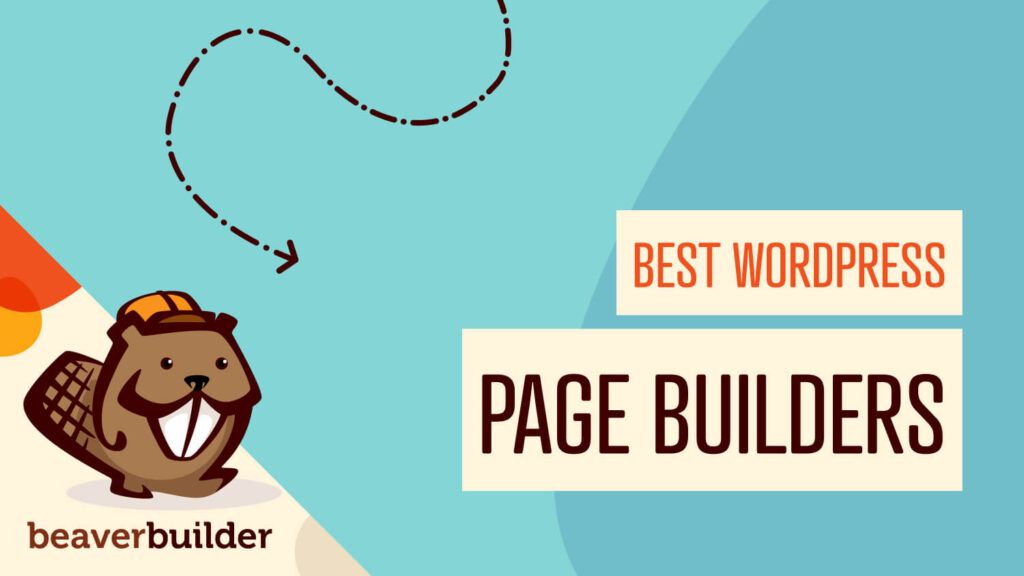8 Ways to Get More Clients Through Your Website
Freelancing has changed the paradigm of what work is supposed to be. Through this new work setup, many people have found flexibility to work wherever they want, whenever they want, without limiting themselves within the confines of an office.
In fact, statistics show that 50.9% of the American workforce, or 86.5 million people, will be freelancing by 2027. That’s a massive increase from the current 53 million freelancers in the U.S.
With this growing number, the freelancing industry keeps getting competitive. This makes it more challenging for freelancers to land a client. Apart from having compelling profiles on various freelancing websites, another way to state ahead in the game is to have your own website. But how can you attract clients through your site?
In this article, I will give you tips on how you can optimize your website to attract more clients for your freelancing business.
How to Attract More Clients Using Your Website
1. Provide a Solution
Let’s be honest; it’s not all about you. This might sound a bit harsh, but many clients don’t really have much interest in what you do or how you were able to provide your services. Most of the time, they want to know what’s in it for them and how they can make more money than what they’ve spent on you.
With this in mind, you need to tailor your website copies around the pains that your services solve. If you’re a web designer, you help businesses look professional in the digital space. You don’t focus on explaining what builder or programming languages you use.
So, be direct and tell them how you can help them grow their business. While it can be helpful to talk about your previous experiences, it’s still a better approach to speak in their language and provide them with all the solutions you can provide.
2. Talk to Your Audience
One common mistake in many freelancer’s websites is that the messaging isn’t conversational. People want to be spoken to, and we often forget to talk to them. Many freelancers spend so much time on their website’s design and copy, promoting themselves rather than talking to their audience.
This goes along with tip number one. In addition to providing a solution, make your website’s messaging personal. I don’t mean for you to address them by first name or anything like that. You just need to make sure that your copy will keep them engaged so that you can build trust.
If you know how to talk to your audience, you will make them feel seen and heard, which will help you land new clients.
3. Don’t Treat Your Traffic Equally
Your website should not be one-size-fits-all. This may seem counterintuitive, but not all traffic is equal. We know that organic visitors from search results aren’t the same as those people who intentionally typed your website’s address. If you treat them the same way, you might lose a potential client interested in your services.
So, imagine this.
You’ve met a potential client at a networking event, and you hand them your business card. If you only have your website’s URL, they will see what everyone else is seeing–your services.
While there’s nothing wrong with this, you won’t shine against your competitors. The client will get bored and won’t probably spend so much time going through your site.
Instead, create a more personalized page for clients you’ve already met. For example, you could say, “It was nice meeting you! Here are the things that I can do for you.” The potential client will feel much more valued, helping you establish a better relationship.
This also works with other campaigns you’ll run. For example, if you’re planning to run Google Ads, Facebook Ads, or other paid campaigns, don’t just direct them to your website, portfolio, or about me page.
It’s better to create specific landing pages for these funnels as it will give the impression that you are talking to them. This will provide you with more authority over your actions and build trust.
Clients who trust and find you credible will want to do business with you. According to a 2021 Edelman report, trust drives business growth. Most consumers will only consider purchasing a service if they know they can trust the brand.
And how can you build trust? Personalization. That’s why it’s essential to never treat all of your traffic equally.
4. Stop Using Jargon
A client looking to hire someone from a specific field doesn’t mean they know much about that subject. More often than not, they don’t know about it and need an expert to help them with their problem. If you use a lot of technical jargon on your site, you’re most likely alienating a potential client.
Although these big words can help make you look like an expert, they could do more harm than good. Here’s how.
Picture this scenario. Imagine you are looking for a new piece of software. When you visit the website, you’re bombarded with highly technical words to explain how the app works.
However, you can’t make a head or tail of what they actually mean. So what do you do? Like most of us, you’ll find another site that explains the feature well without getting too technical because it doesn’t intimidate you.
As an example of how to do it properly, take a look at Appetiser, a web application development company. Straight away, they explain how they can help you get results and how you can partner up with them, followed by a simple yet effective frequently asked questions (FAQ) section.
The same thing happens with your potential clients. If your website is filled with industry jargon, they may feel intimidated and look for another solution that can explain their services in a much more digestible manner.
Clients mostly care about how they can make more money, generate more sales, and some other things that can help their business grow. Focus on those.
5. Give Them a Taste of What You Can Do
Have you heard of the word lead magnet? If not, then it’s probably time to learn about it. A lead magnet is a marketing game plan that refers to a free item or service that is given away to collect the contact details of potential customers.
This can range from whitepapers, checklists, design ideas, or anything your client can use to help with their business. At the same time, lead magnets can also show them how you work.
Think of it as a way to impress someone. If you’re a writer, provide an eBook on how businesses can create compelling copies for their social media. You’re not essentially giving free services, but you’re showing them the idea of how it’s done.
They will contact you immediately if they’re happy with what they see.
But it doesn’t stop there. Once you have their email, you can easily send them a nudge–a follow-up email where you allow them to contact you if they have questions. This lets them know that you saw they are interested in your services and that you will be there anytime they are ready to move forward.
Just be creative when you’re creating a lead magnet. Think of something that can help highlight your expertise without giving so much for free. This could also be a free 30-minute consultation or even a free template if you’re a web developer.
6. You Are a Brand
Another common mistake freelancers make is that they don’t brand themselves. Many people think that branding only applies to companies or celebrities, but anyone who is an expert in their field can create a brand for themselves. So what exactly is branding in freelancing?
Personal branding is how you define yourself in the workplace while incorporating elements that make you who you are. This will help you stand out from the growing number of freelancers.
When creating a brand for yourself, remember these three Cs: clarity, consistency, and constancy. First, you must be clear about who you are and what you can offer. Avoid sugarcoating any of your experiences and qualifications.
Next, always use your brand across all communications and mediums. Lastly, determine where you belong in your industry and expertise and remain visible to your target clients.
7. Your Website Is Not So Different from Product Websites
If you think your website differs from a product website, think again. You’ll be surprised that many of the principles used in product websites can also be applied to your site. Below are the six critical elements of a website that can help you attract more clients:
- Problem: Before someone hires you, they need to know that they have a problem that needs to be addressed. So what issues do most of your clients have before they come to you? An important note to keep in mind, many business problems have a deeper meaning. So instead of focusing on an obvious problem, try to understand the real reason why it exists and be sure to address that on your site.
- Solution: Once you’ve highlighted their problem, you need to provide a way to solve them. This is where your services come in. What can you offer to the client that can ease their pain? Where do you excel, and how can you use these skills to help your client? When writing a solution, remember tip number two: be conversational. Focus on them and how your solution can help them. Don’t just talk about how excellent your skills are.
- Objections: You can’t please everyone, and that’s okay. But with a website, you can’t argue your way if a prospect doubts your skills. The best way to address this is to create a section where you answer common objections that they may have. Why are you worth their money? How reliable are you? How can they make sure that you deliver? If you have answers to these questions, it’s easy to attract and convert clients.
- Testimonials and Reviews: Clients don’t need to hear how easy you are to work with. They need testimonials showing how other clients have benefited from your services. This allows prospects to relate to previous clients’ problems, giving them a glimpse of their future if they hire you. It’s also a testament to your clean track record.
- Call to action: What do you want your client to do after reading your website? Do you want them to contact you or book an appointment with you? Whatever it is, you need them to act, and this is where you shine. Make sure that it’s convincing enough for them to take action. This will be your last chance to seal the deal, so make sure it’s as compelling as possible.
8. Visuals Tell Stories Too
Your website should have photos and images too. A heavily worded website can be overwhelming–no one wants to read a bunch of text; it’s too dull. That’s why you need to incorporate visuals as much as you can. They can help tell your story too.
However, be mindful when you add graphics to your site. If you add large images, they can affect the laid speed of your site, which can impact the user experience.
So, when using visuals, strategically place them in sections with vast chunks of text. This will avoid boring your audience, keeping them engaged and entertained. Videos can also be beneficial in keeping people on your site.
Conclusion
There is no magic formula for attracting new clients through your website. Every target audience is different, so the best strategy you can employ is to understand your market and apply techniques that work for them. These tips are just here to help you get started, so practice what you think will work and ditch those that don’t.
Do any of these tips work for you? Let us know in the comment section!
Related articles
Bricks Alternative: Why Beaver Builder Leads in 2025
Looking for a reliable Bricks alternative? You’re not alone. While Bricks Builder offers clean code and modern features, many developers…
7 Elementor Alternatives in 2025: Faster, Cleaner WordPress Page Builders
Are you searching for the best Elementor alternatives to build faster, more reliable WordPress websites? You’re not alone. While Elementor…
12 Best WordPress Page Builders
Are you looking for a great page builder to use for your WordPress website? Stick around as we share a…
Join the community
We're here for you
There's a thriving community of builders and we'd love for you to join us. Come by and show off a project, network, or ask a question.
Since 2014
Build Your Website in Minutes, Not Months
Join Over 1 Million+ Websites Powered By Beaver Builder.
 Beaver Builder
Beaver Builder 



